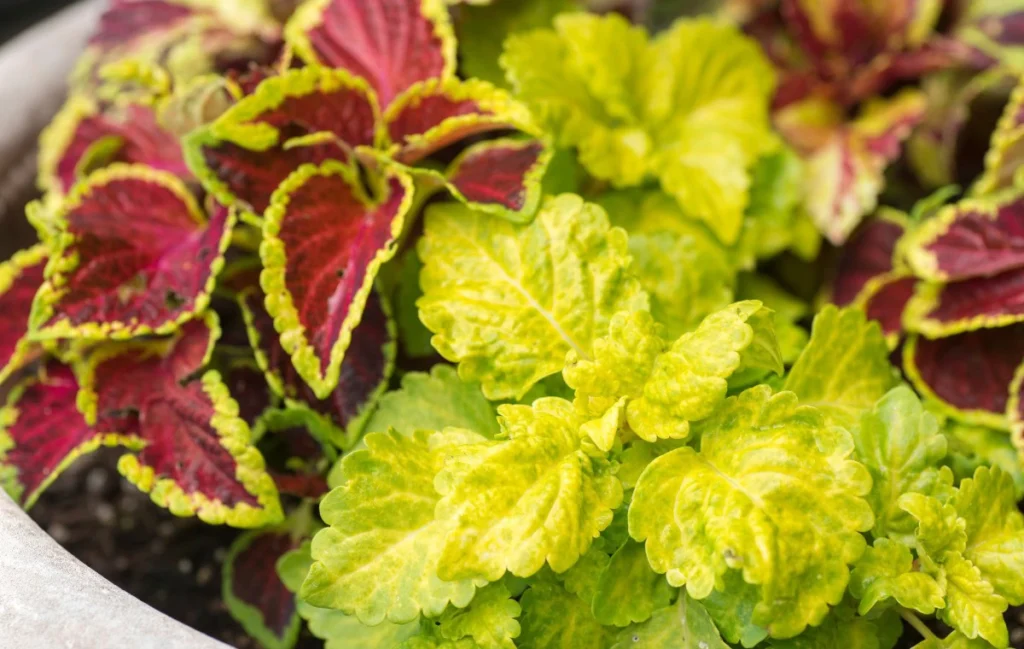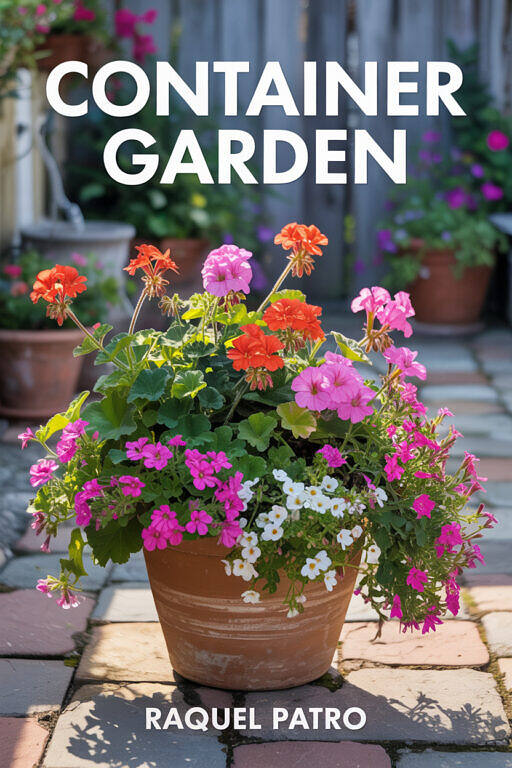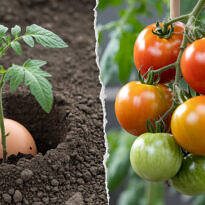If you’re thinking about getting into gardening but feel like you don’t have a “green thumb,” the Coleus (Solenostemon scutellarioides) might just be your new best friend. Also known as “painted nettle,” this plant is so colorful it looks hand-painted. And the best part? It’s so easy to care for that even those who have managed to kill cacti can succeed with it.
In this article, we’ll guide you through growing coleus at home—no miracle promises. We’ll talk about light, water, soil, and everything else you need to know to successfully cultivate this vibrant plant. Ready to get started? Let’s go!

Why is coleus a great choice?
Before we dive into practical tips, let’s reflect: why coleus? Well, aside from looking like it came straight out of an art gallery, it’s resilient, adaptable, and doesn’t require a degree in horticulture to thrive. You can grow it in pots indoors or in garden beds, and it will even forgive you if you forget to water it occasionally (but don’t overdo it, okay?).
So, can you already picture how a coleus could brighten up your home? Or will it be that friend you forget in the corner, yet it still manages to survive? Let’s find out!
1. Where to place your coleus: sun or shade?
The first question everyone asks is: “Where should I put this plant?” Coleus loves plenty of light, but the ideal location depends on where you live. In hot climates, such as tropical and equatorial regions, it won’t appreciate direct sunlight all day. In this case, partial shade is ideal, where it gets 4 to 6 hours of direct sunlight daily, preferably in the morning or late afternoon.
However, if you live in subtropical, temperate, or even high-altitude tropical regions, coleus can thrive in full sun all day. It will look stunning in colorful garden beds, contrasting with other varieties or different plant species.

And what about indoors? Is that possible? Many people grow coleus indoors, and it can thrive in that setting as long as it gets plenty of light. A spot near a window with direct sunlight or sheer curtains filtering the light is ideal for your coleus pot.
So, have you thought about where you’ll place your coleus? Will it enjoy that cozy spot by the kitchen window? Or will it prefer the balcony? The plant won’t talk, but it will certainly give you signs!
Watch out for signs like leggy growth (elongated stems with pale leaves) or a mealybug infestation. These are clear indicators of insufficient light.
2. Soil: not too basic, not too fancy
Coleus isn’t a picky plant that demands highly specialized soil. It prefers well-draining soil rich in organic matter. A simple mix of garden soil, worm castings, and a bit of coarse sand will do the trick. Of course, you can use other materials depending on what’s available in your area. The key is to have light, well-draining soil that still retains some moisture.
Avoid clay-heavy soil, which retains water and hardens over time. Likewise, overly sandy soil will dry out too quickly and stress your coleus. If your garden soil has drainage issues, try planting your coleus collection in raised beds. Elevated planting improves drainage and keeps your plants healthy.

Have you ever thought about how soil is the foundation of everything? It’s like a bed for plants—if it’s comfortable, they grow happily. If it’s not… well, you know what it’s like to sleep on a bad mattress, right?
3. Watering: not too much, not too little
Here’s one of the most important tips: coleus likes moisture but doesn’t tolerate being waterlogged. Water when the soil feels dry to the touch, but don’t overdo it. In summer, watering every 2 to 3 days may be needed; in winter, every 5 to 7 days should suffice. But don’t rely too much on fixed schedules—focus on keeping the soil slightly moist at all times, rather than letting it dry out completely between waterings, which can stress the plant.
Fun fact: Overwatering is the most common mistake when growing coleus. It can cause root rot, and then it’s game over. So, hold back the urge and be careful not to overdo it!
Have you ever thought about how the right amount of watering is like a relationship? Not too much, not too little—just the right balance!

4. Fertilization: coleus’ “snack time”
To keep coleus leaves vibrant and colorful, fertilization is essential. Since it grows quickly and is often treated as an annual or biennial, it has high nutrient demands. But that doesn’t mean you need expensive fertilizers! Fast-acting, commonly available fertilizers applied once a month are perfect for this plant.
One important detail: since coleus produces anthocyanins and carotenoids (the pigments responsible for its vibrant colors), make sure to use fertilizers that provide more than just NPK (nitrogen, phosphorus, and potassium). Look for fertilizers containing magnesium, sulfur, and calcium, along with essential micronutrients.
Complement with organic fertilizers like worm castings, bokashi, or neem (or another oilseed) cake every two months. If you prefer, use a liquid foliage fertilizer every two weeks in spring and summer.
Quick tip: Don’t overdo the fertilizer. More doesn’t always mean better, and you don’t want to burn your plant’s roots!

Have you ever thought about how nutrients are like a healthy snack for coleus? They keep the plant strong and full of energy! Without proper fertilization, plants become weak, lose their color, and are more susceptible to pests.
5. Pruning: The secret trick for a thriving coleus
Coleus grows quickly, and pruning is essential to keep it beautiful and compact. The first prunings involve pinching, where you remove the plant’s tips with a quick pinch using your fingertips. If you’re unsure about pinching, you can use scissors for the same effect. This pruning technique, although it may seem harsh, is crucial for “breaking apical dominance” and encouraging the plant to develop lateral branches. The result is a well-branched plant growing from the base, with a full and compact appearance.
As the plant grows and develops, some branches may become too long. Refresh its overall look with a light pruning, cutting about 1/3 of the length. This stimulates new shoots, fresh leaves, and makes the plant denser.
Special Tip: Use the pruned tips to propagate new plants. Coleus reproduces easily from cuttings, and soon you’ll have more plants to spread throughout your garden (or gift to friends).
So, have you ever thought about how a simple pruning session can multiply your garden’s beauty? It’s like a “haircut” that makes everything look better!

6. Propagating coleus: Grow your own plants
Speaking of propagation, did you know coleus is one of the easiest plants to propagate? Simply cut a healthy branch, remove the lower leaves, and place it in a cup of water or regular potting soil. Within days, roots will start to appear, and you can transplant the new plant into a pot. That’s right—unless you’re aiming for commercial production, there’s no need for special care, rooting hormones, or complex techniques. Just stick the cutting into the soil or leave it in water, and soon you’ll have a healthy plant to grow in pots or in the garden.
Practical Tip: For better success, choose branches at least 4 inches (10 cm) long and cut just below a node (the little bump where leaves emerge). This is where the roots will develop.
When your plant shows signs of new growth, such as a fresh shoot, it’s ready to be moved to its final location. Avoid sudden changes in light at this stage. If it rooted in the shade, keep it in the shade—gradually adjust the lighting over several days to help it adapt to new conditions.
Ever thought about gifting your friends coleus cuttings? It’s a great way to share your love for plants (and save money on presents)!
7. Pests and diseases: The downside of gardening
Although resilient, coleus can be attacked by pests such as aphids and mealybugs. Keep an eye on the leaves, and if you notice any signs of infestation, wash them with water and mild soap or use a natural insecticide like neem oil. If you have many plants, a water-based traditional insecticide may be necessary.
Preventive Tip: Keeping the plant well-ventilated and avoiding excessive moisture are simple measures that help prevent problems. The right amount of light (not too much or too little), along with balanced fertilization, is key to strong plants resistant to pests and diseases.
Have you ever thought about how a keen eye can save your coleus from unwanted visitors? It’s like that friend who always tells you when there’s something stuck in your teeth.
Warning: Avoid applying insecticides (natural or otherwise) during peak sunlight hours. Instead, apply them in the late afternoon to prevent chemical burns on the leaves.
8. Wind: The invisible enemy
Did you know wind can be a problem for coleus? This plant has large, delicate leaves that can tear or break in strong winds. Its naturally compact branches can become messy and damaged under intense wind conditions. If you live in a windy area, find a sheltered spot for your coleus, such as near a wall or under the protection of other plants.
Practical Tip: If your coleus is in a pot, move it to a more protected spot on windy days. If it’s in a garden bed, consider planting shrubs or hedges around it to create a natural windbreak.
9. Flowering: To keep or remove the flowers?
Coleus is primarily grown for its colorful foliage, but it also produces small blue or purple flowers. The question is: should you keep or remove them? Well, it depends on your goal. The flowers are pretty, but they can divert the plant’s energy, causing the leaves to lose some of their vibrancy.
Golden Tip: If you want your coleus to maintain its stunning, vibrant foliage, remove the flowers as soon as they appear. Simply trim the flower stalks with clean scissors.
Nature is full of choices—don’t be afraid to make yours! Even not deciding is a decision.

10. Repotting: Renewing the life of your coleus
Although coleus is a perennial plant, it is often treated as an annual or biennial, as it may lose vigor and beauty after a year or two. To keep it looking its best, periodic repotting is essential. If your coleus is in a pot, you can refresh the soil and trim the roots every 12 to 18 months. If it’s in a garden bed, consider planting new cuttings (which you’ve propagated yourself!) to refresh the look of your garden.
Practical Tip: When repotting, choose a container slightly larger than the previous one or a garden bed with enough space for the roots to expand. Don’t forget to add some organic matter to the soil to replenish nutrients and improve aeration.
Have you ever thought about how repotting is like a “renovation” for the plant? It’s a chance to start fresh and make everything look even better!
Get inspired and start today!
Now that you know how to grow coleus at home or in your garden, why not get started? Pick a special spot, prepare the soil, water it with care, and watch your plant thrive with vibrant colors.
Remember: gardening is a journey of learning and discovery. And with coleus, you have the perfect, colorful companion to begin with. So, what are you waiting for? Let’s turn your home into a tropical garden (or at least a greener, more inviting space)!
Did you enjoy these tips? Share this article with your friends and fellow plant lovers.







